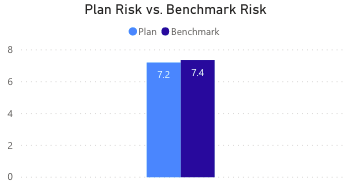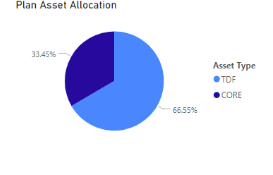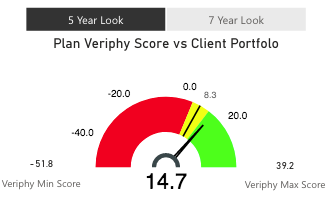What is old is new again.
I remember wearing my purple bell-bottom jeans to high school and thinking I was so cool. When I look at the pics … well, it’s a bit embarrassing. Yet bell-bottom jeans are making a comeback. I saw them on the web. The color was “tawny port.’ Still looked purple to me. It was fun to remember.
Also, this week, I encountered an “old is new” 401(k) plan fee negotiation. Let’s just say that proprietary funds are making a comeback. It reminded me of the early 2000’s. They’re just being repurposed in a different package.
So, here was the offer … we are going to reduce your recordkeeping fee significantly and we would like you to use our lower cost “collective trust-based” target date funds instead of the mutual fund product you have been using. The end result will be a 50% savings on your recordkeeping fees and you’ll still get our incredible investment management services.
Since this was an unsolicited offer, the first rule of fiduciary duty is buyer beware. Nobody is working for free.
You might want to believe that your vendor is simply doing this because they love you so much as a client and what’s not to love! You are a great client. Right?
Here’s your first fact: recordkeeping vendors with proprietary products are in business to maximize THEIR revenue, not to minimize your Plan costs. So, it is your duty as a fiduciary to understand all the facts and dig into the details. Find a balance using transparency and accountability.
Find and stick to the facts:
A 401(k) Plan with $286 million in assets and 2250 Participants (all publicly traded mutual funds with a combination of passive and actively managed investments), and about ½ of the plan’s assets were in proprietary target date mutual funds.
Recordkeeping costs were set at 9 basis points (that is 0.09%) based on plan assets. The plan sponsor was told this was a “required revenue rate.” So, the cost for administration recordkeeping and related services to this plan was just over $114 per participant. This rate was a bit high based on my experience in measuring these plan costs and also high compared to benchmarking data.
Recordkeeping costs were simply paid through revenue sharing that was collected by the vendor. This is a very common structure, but one that prudent fiduciaries avoid in general. It is generally better to negotiate a fixed fee based on the number of account balances in the plan.
Then, just like the add for those “tawny port” bell-bottoms telling me I’m gonna look awesome … the vendor says they want to introduce lower cost “collective trust” investments into the mix and will reduce the recordkeeping fee to 5 basis points. A 44% reduction in cost. This sounds like utopia. Collective trust funds are “hot” in the marketplace because they often have lower expenses than mutual funds.
What is going on here?
In order to see the game, you need to look into all the details, not just what’s on the surface.
Here are basic facts:
- Recordkeeping services would remain the same, so the reduction in fees sounds great.
- All funds in the Plan would remain the same with the exception of a change to the use of collective trust Target Date Funds from the same fund family.
- This offer would reduce the cost of target date funds by approximately 15%
- The recordkeeping cost would be reduced by 50% and the overall cost of funds would be reduced nearly 8%.
Sounds like a no-brainer.
Here is what was not disclosed:
- The Target Date Fund’s have multiple share classes being offered and it was the most expensive share class that was proposed (Yes, it was still less expensive than the current mutual fund offering)
- The least expensive class of TDF’s in the Vendors stable was literally 50% less expensive than the class that was offered to the Plan Sponsor!
- That difference can be translated into increased profits for the recordkeeper with proprietary funds.
- In fact, it results in an additional $200+ per participant in annual vendor profit. Yes, that is $450,000 which is almost double what was being paid before.
- So instead of a reduction in recordkeeping cost, it appears that the vendor has increased their fees for recordkeeping service nearly 250% by hiding the fact that lower expense collective trust funds were available.
- The Plan Sponsor was duped … what looked like a huge reduction in cost, was actually a massive increase.
How can that happen. Well, Collective Trust disclosures are not as rigorous as mutual funds in general, but that was not the problem here.
The Plan Sponsor (and their Advisor) were simply unaware of the lower cost classes available to the plan. Being unaware is terrible when you are a fiduciary!
 Al is the Co-Founder and CEO of Veriphy℠, a 35-year veteran of the financial services industry and has spent the majority of his career as an independent RIA.
Al is the Co-Founder and CEO of Veriphy℠, a 35-year veteran of the financial services industry and has spent the majority of his career as an independent RIA.
Say this:
“Please provide all the collective trust share classes offered, their performance history and their investment expense.”
So, get real and ask the hard questions – get transparency. You’re not going to look good in those purple bell-bottoms. And, if you are a Plan fiduciary, good facts are far more important than looking good.
Click here if you’d like a no pressure discussion on plan fees or plan value received. It’s free if you subscribe to our email newsletters.










 Al is the Co-Founder and CEO of Veriphy℠, a 35-year veteran of the financial services industry and has spent the majority of his career as an independent RIA.
Al is the Co-Founder and CEO of Veriphy℠, a 35-year veteran of the financial services industry and has spent the majority of his career as an independent RIA. 

